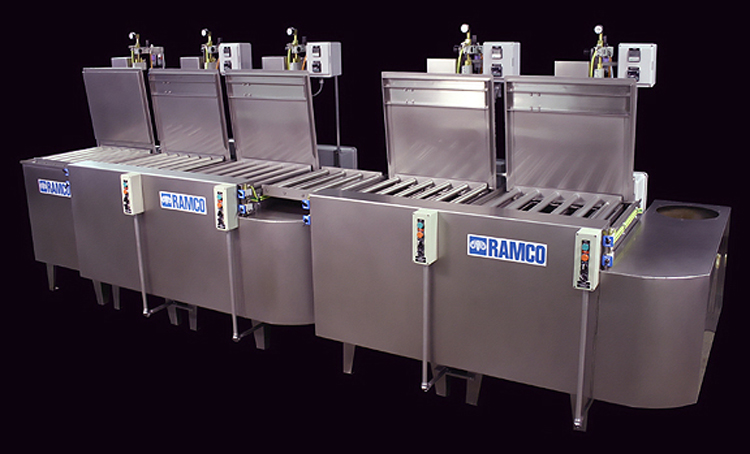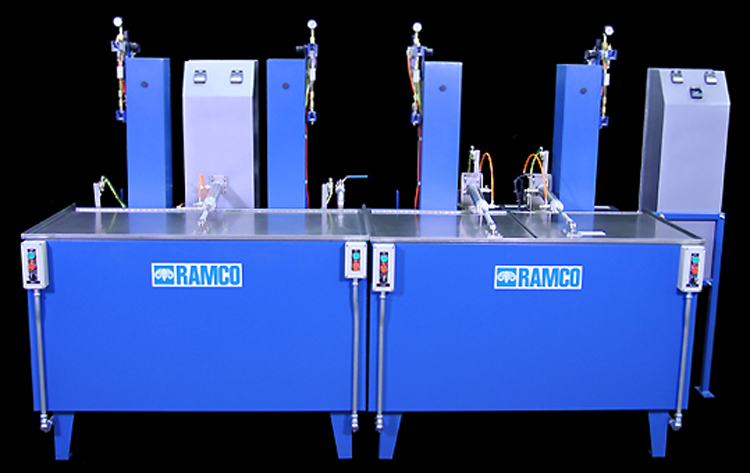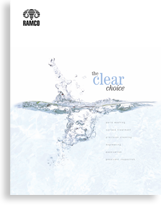Parts washing systems for surface treatment are used to alter the surface attributes of metal. This process has as its primary objectives any or all of four outcomes:
1) To enhance decorative or reflective characteristics of the metal.
2) To prevent or slow down the metal’s corrosion.
3) To increase the metal’s hardness in order to lessen the probability of damage or deterioration.
4) To boost the metal’s inherent electrical or mechanical attributes that will enhance the part’s function.
The applications of surface treatment are an essential parts of the manufacturing process across virtually every industry that produces any metal products. The process is widely utilized for industries such as automotive, construction, heavy equipment manufacturing, industrial equipment, agricultural vehicles and machinery, aerospace, medical and laboratory equipment, electronics, military and defense, marine (shipping and watercraft) and many more. Any component parts such as nuts, bolts, screws, clamps, brackets, shelving and thousands more routinely undergo some form of surface treatment.
RAMCO Systems’ Basic Surface Treatment Process

The use of immersion parts washing systems for surface treatment involves adding to the metal’s surface energy, and, in this way, serves both as a preparatory step prior to applying another coating and/or the formation of a protective layer that is less susceptible to external harmful substances or corrosion. The treatment itself promotes a chemical (or sometimes electro-chemical) reaction between the metal and the treatment solution.
Surface treatment of industrial parts is often a necessity as directed by the product’s designers or engineers, and may entail the treatment of the entire surface exterior or, in some cases, only a particular segment of a given part.
Surface treatment procedure is typically a four-step process:
1) The part or parts to be treated are first cleaned in order to remove any unwanted substances from the surface. Such substances include, but are not limited to grease, oil, debris, dirt, chemical coatings, paint, rust, etc.
2) The metal’s surface treatment is then administered. The specific type of treatment depends upon multiple factors such as the type of metal and the metal’s properties, its intended use, and the types of external conditions it will be subjected to.
3) The metal is then thoroughly rinsed in treated water (e.g. reverse osmosis or de-ionization).
4) All moisture is removed by a drying process. The method of drying may vary.
However, there are numerous types of surface treatments , each devised to augment the surface properties of the components to be treated. Among the most common industrial parts surface treatments are:
Chemical – A procedure that produces a chemical reaction resulting in a thin protective or, in some cases, a conductive or priming layer over the metal’s exterior. One of the most prevalent treatments of this type is passivation, which eradicates free iron from the surface of metals such as chromium.
Anodic Oxidation – A process employed to the surfaces of softer and lighter metals, especially aluminum. Prevention of contaminant accumulation is effected via anodization, which, through electrolyisis, yields a protective “shield” of oxide film.
Vacuum Plating – The metal part (or parts) are put into a vacuum chamber, where a surface finishing substance such as Titanium nitride is very exactingly bonded with the metal surface.
Hot Dipping – The metal is submerged into another metal such as molten lead, tin, zinc, etc. The dipping process produces a durable exterior coating that greatly enhances the interior metals imperviousness to the extremes of severe weather conditions or conditions involving the part’s specific end use and environment.
Thermal Spraying – Most often used to provide a thermal protective layer on parts that are routinely exposed to high temperatures. The protective material may be either melted or heated, then applied to the target part.
Adapting to the Changing Market
As always, RAMCO keeps pace with changing technology as well as the evolving chemical industry, which continues to produce new and more sustainable cleaning and surface treatment solutions. These new products are instrumental in reducing surface treatment process time, allowing for a reduction in operating temperature. These, in turn, have a ripple effect in response to regulations, quality standardization, and market demand, continues to manufacture cleaning solutions that are less toxic, pose less risks to workers, and lessen the potential for adverse environmental impact.
Built to your specs, RAMCO’s parts washing systems for surface treatment are engineered to accommodate anything from light to heavy loads, as well as offering the durability, adaptability and safety required to permit the use of the widest possible range of cleaners and coatings. Among them are both acidic and alkaline cleaners, pH neutral deoxidizers, degreasers, solvents, etchants, Iron-Manganese solutions, Zinc-Phosphating solutions, corrosion-resistant treatments and more.

Above – A citric acid passivation systems designed and built at RAMCO; developed based on the batch load size/weight, cleanliness level of the parts prior to passivation, and the required throughput per hour.
We realize your industry demands dependable and safe, specialized surfaces treatments. Our engineers will work closely with your own team, providing an in-depth analysis and present you with options for a system that best meets your requirements. RAMCO features a whole host of both single, stand-alone units or modular unit configurations.
Take advantage of RAMCO’s 90+ years of expertise with immersion parts washing systems for surface treatment. Schedule a free consult with an expert and call 800-553-3650.


